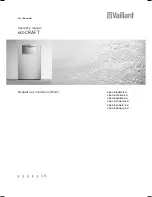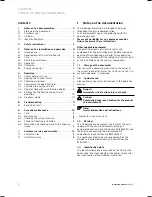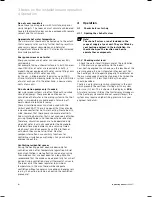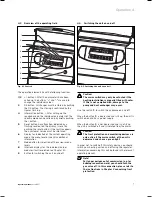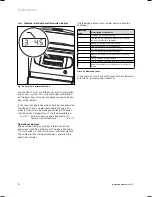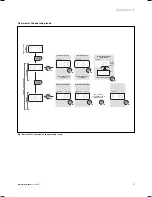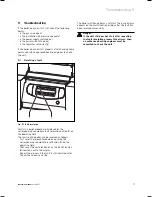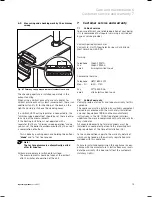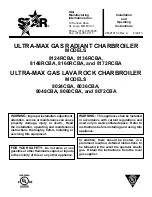
12
Operating manual
ecoCRAFT
6
Care and maintenance
6.1 Care
Clean the exterior of your appliance with a damp cloth
and a little soap. Do not use scouring or cleaning agents,
which might damage the housing or plastic fittings.
6.2 Maintenance
Each machine needs care and maintenance after a
specified operating period to ensure that it will continue
to operate safely and reliably. Regular maintenance
forms the basis for continuous readiness for operation,
reliability and a long working life for your Vaillant
ecoCRAFT.
A well-maintained heating unit will operate at better
effectivity and will therefore be more economical.
Permanent operational readiness, safety, reliability and a
long service life require inspections and maintenance
work to be carried out regularly every year by a heating
engineer.
Danger!
Never attempt to perform maintenance or
repairs on your heating unit yourself. Assign an
approved qualified servicing company with this
work. We recommend signing a service
agreement*.
The reliability of the appliance can be impaired,
resulting in damage to property or personal
injury if maintenance work is not carried out.
6.3
Checking the system pressure
For the heating system to operate properly, the indicator
on the pressure gauge should be at approx. 3 bar when
the system is cold. If it is less than 0.8 bar, then water
should be added. Pay attention to the water quality and
the hardness of the filling water.
There is a water pressure switch integrated in the unit
which prevents the unit from starting up if the system
pressure < 0.2 bar. This is shown in the display as
E26
.
At water pressures > 0.8 bar the fault display disappears.
If the heating installation operates over several floors, it
may be necessary to have higher water levels on the
pressure gauge. Ask your heating engineer about this.
6.4
Filling unit/heating installation
Caution!
ecoCRAFT boilers consist of a heat exchanger
made of ALUMINIUM alloy. In order to inhibit
the natural corrosion process in a heating or
hot water system, the system must be
thoroughly flushed out before commissioning.
Deposits of lime and the formation of gas in the
water can lead to damage in the boiler, and the
system must be water-tight to avoid damage
The addition of chemicals such as e.g. frost and
corrosion prevention materials (inhibitors) is
not permitted.
Information concerning the filling and topping up of the
heating installation can be provided by your approved
heating engineer.
Proceed as follows to fill the installation:
• Open all thermostatic valves in the installation.
• Connect the filling and drain cock of the installation to
a cold-water tap using a hose. (Your heating engineer
should have shown you the filling fittings and should
have explained the filling and draining of the
installation to you).
• Turn the filling cock and the tap on slowly and add
water until the required installation pressure is shown
on the pressure gauge.
• Turn the tap off.
• Vent all the radiators.
• Re-check the pressure in the installation (if necessary
repeat the filling process).
• Close the filling cock and remove the filling hose.
6 Care and maintenance

